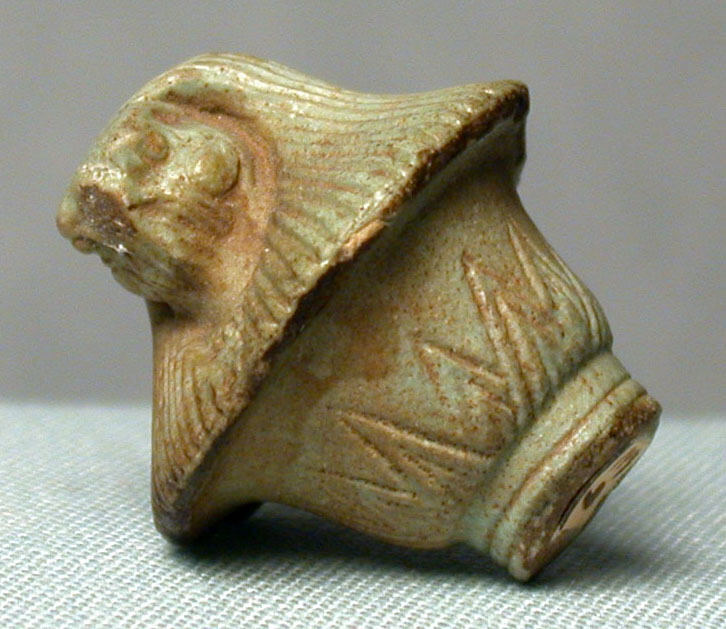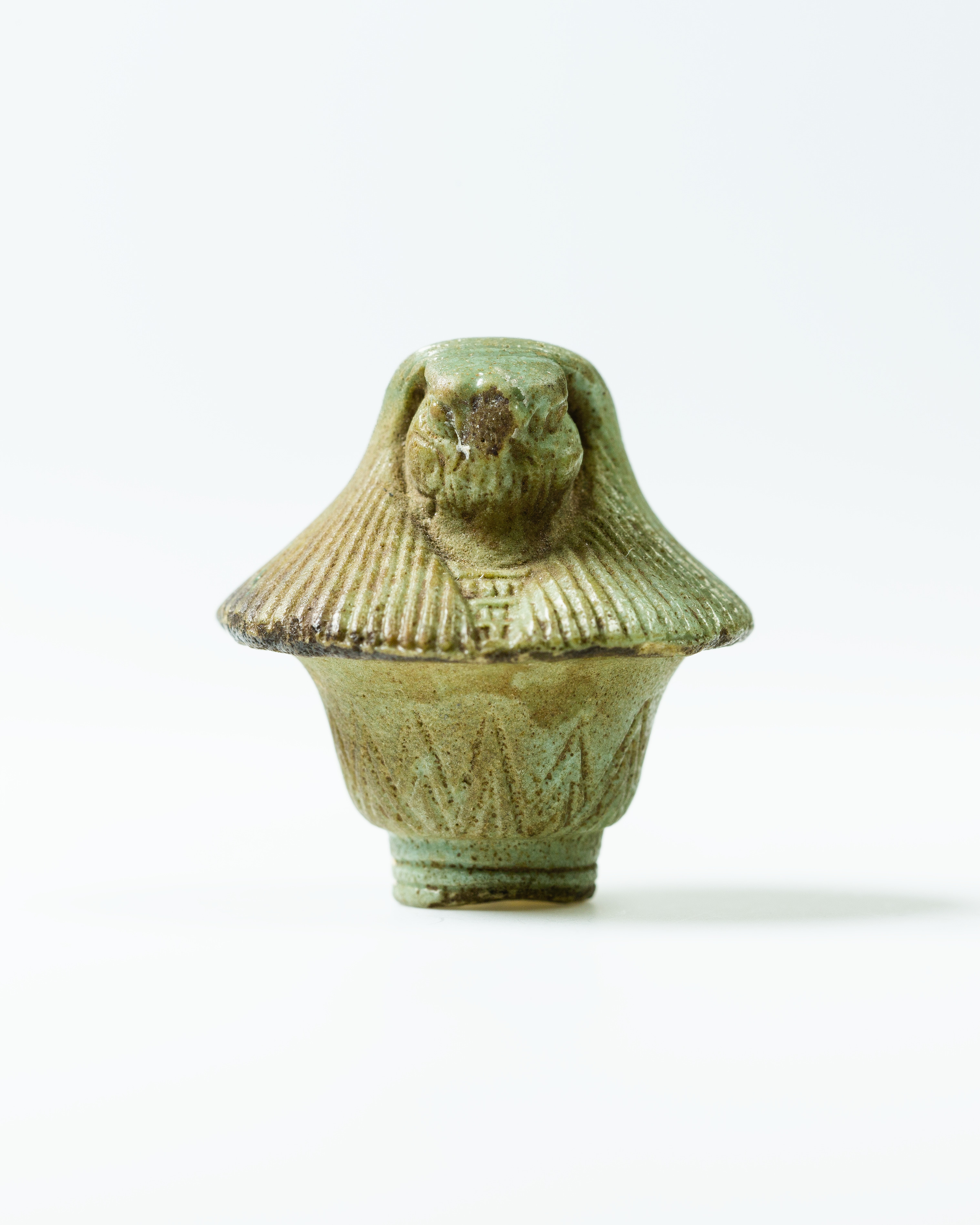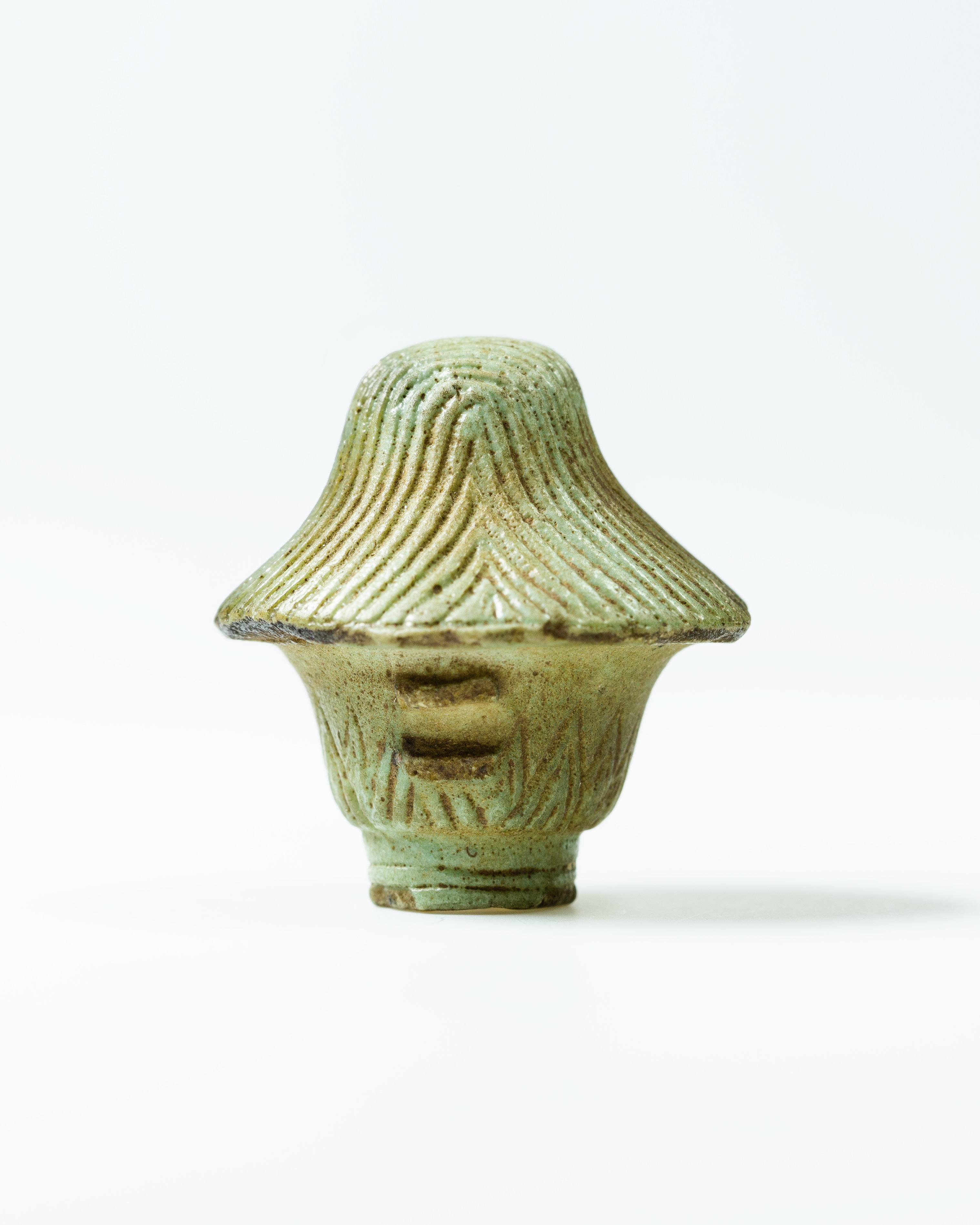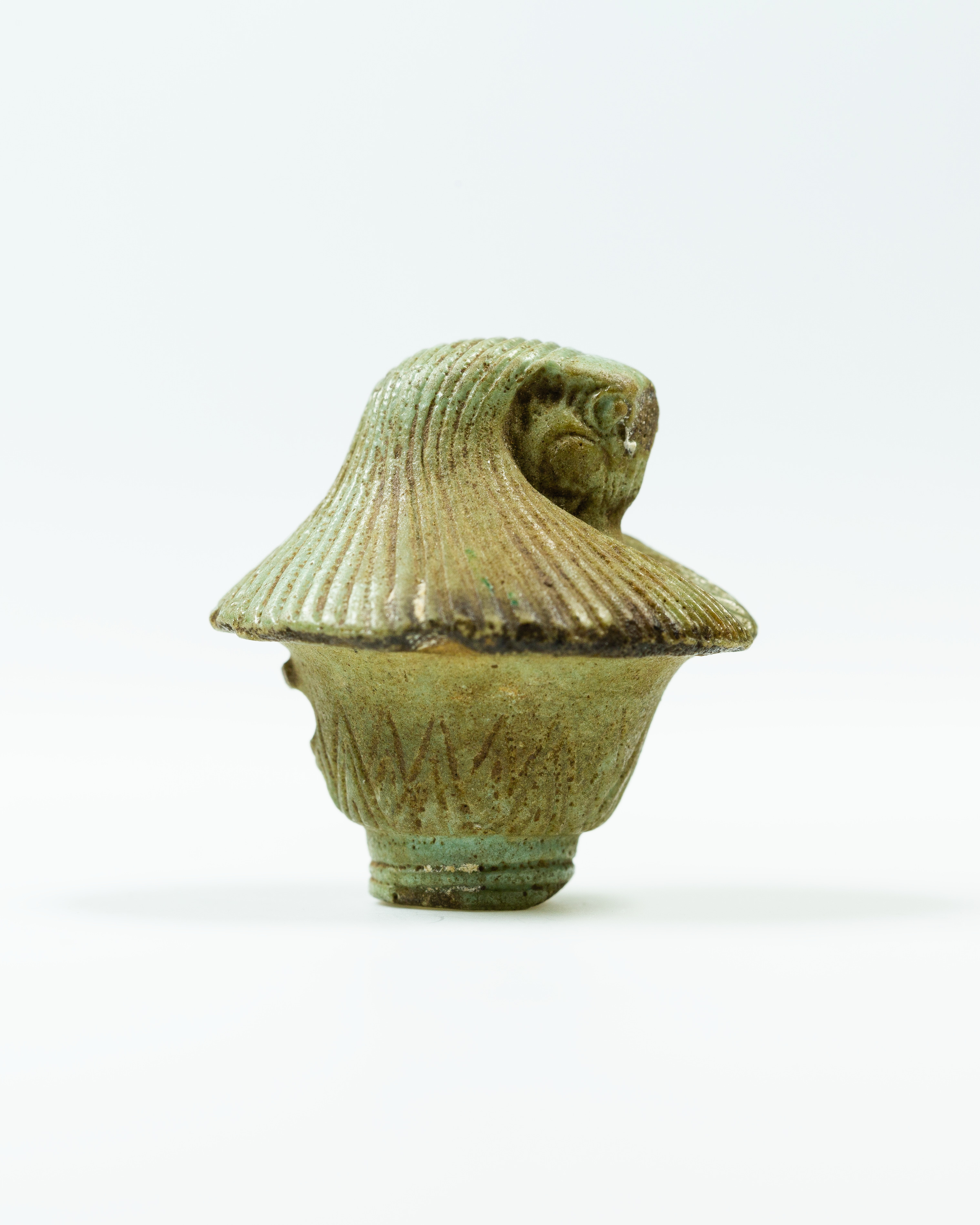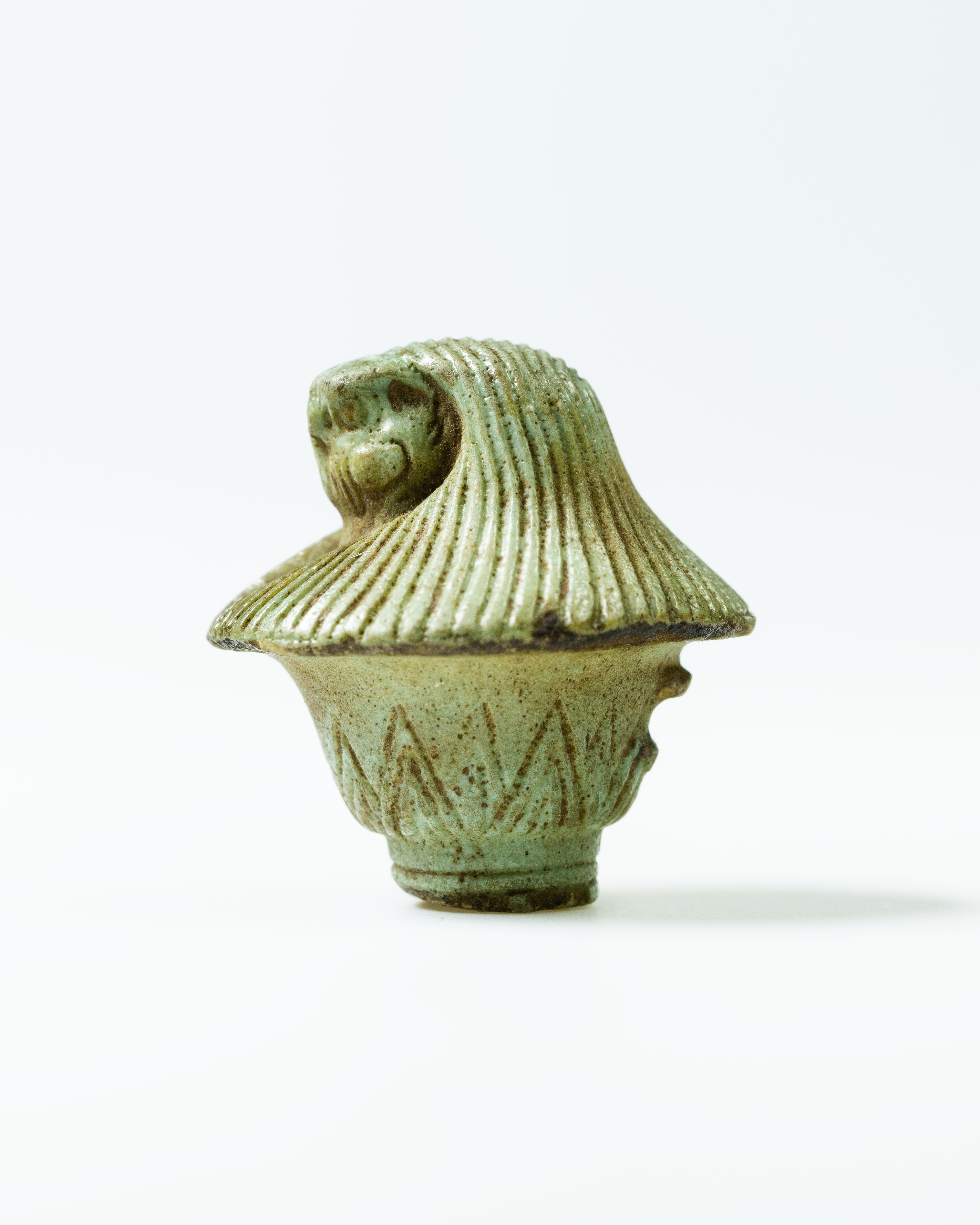Top of papyrus scepter amulet with falcon head
Third Intermediate Period–Ptolemaic Period
Not on view
This small and intriguing piece features a falcon head at the top. The face is framed by a long striated wig that does not fall straight down as it usually does in the depiction of falcon-headed deities with a human body, but it fans out into a beautiful wide cape-like circle. Here, only the head of the god is depicted. It was placed on top of a papyrus scepter of which only the top section is preserved. The preserved part represents the papyrus umbel, which is decorated with triangular incised markings.
On the back of the falcon head are the remains of a loop that would have allowed to suspend the piece. This pendant is a rare variant of the more common plain papyrus scepter amulet. The plant itself, its Egyptian name wadj (which means "green" or "fresh"), and the choice of green-blue faience all strongly evoke life, vitality, and regenerative power, qualities desirable for the living and the dead. The combination of a falcon head with the papyrus possibly alludes to the god Horus who, among other forms, can be depicted as a falcon-headed man. According to ancient Egyptian mythology he was hidden and brought up in the papyrus marshes by his mother Isis.
This image cannot be enlarged, viewed at full screen, or downloaded.
This artwork is meant to be viewed from right to left. Scroll left to view more.


